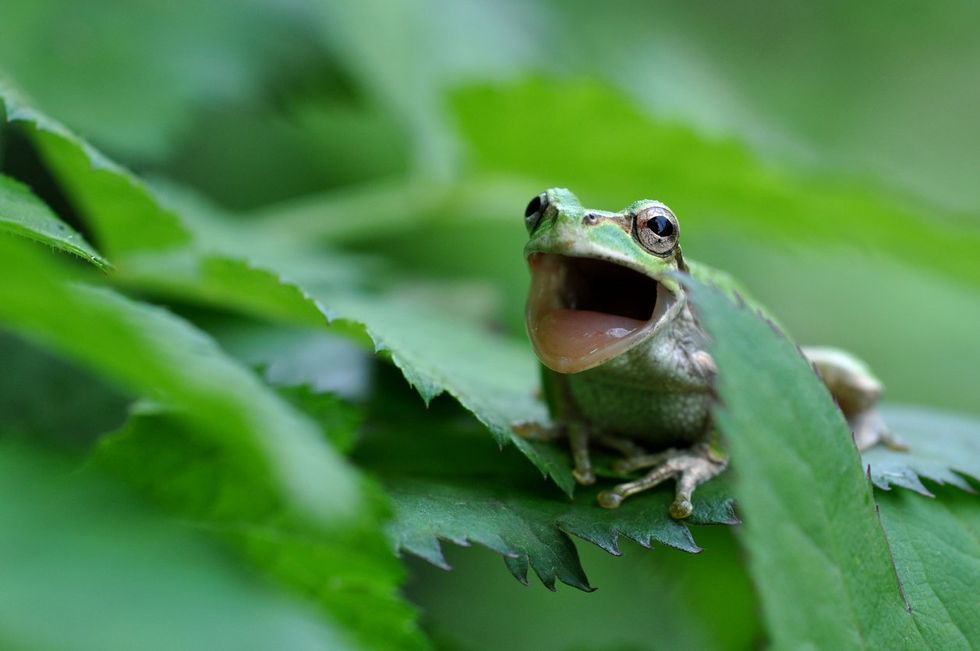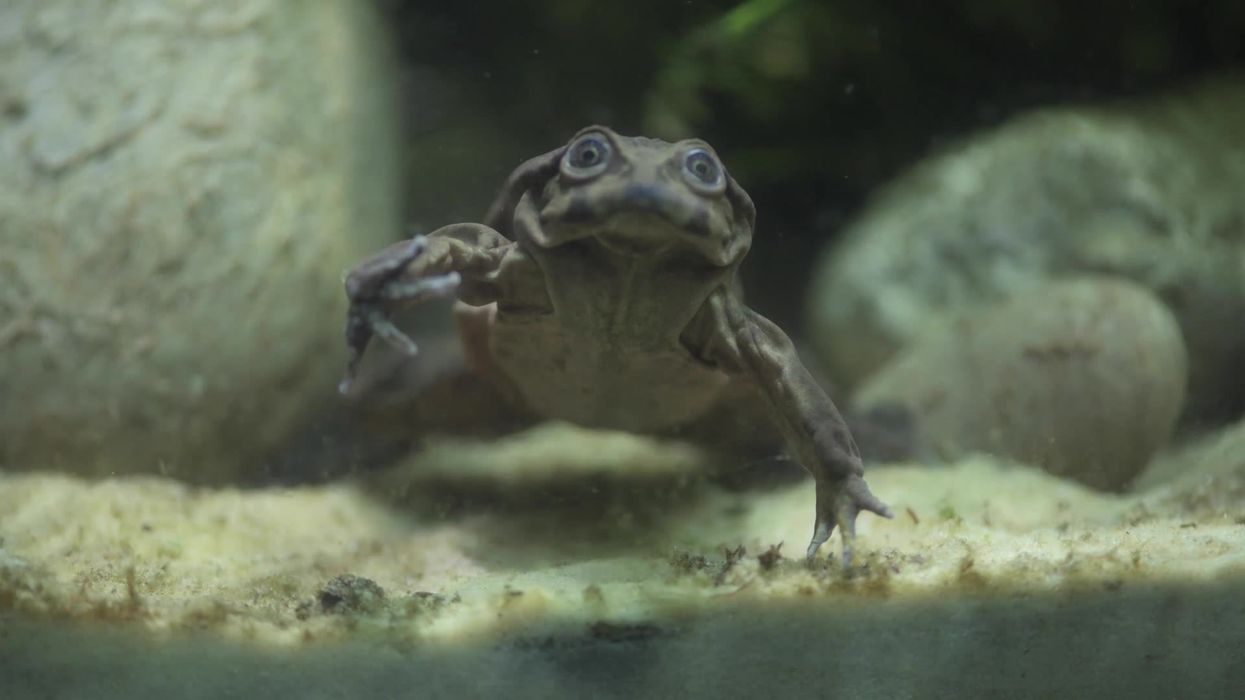Ellie Abraham
Apr 11, 2024
Rare ‘Scrotum’ Frogs Go On Display At Chester Zoo
content.jwplatform.com
Scientists have recorded a frog’s scream for the first time after recording the sound usually inaudible to human ears.
Earlier this year, the amphibians made headlines after a mushroom was seen sprouting from the leg of a living frog, sparking concern among experts.
But, now scientists have revealed that frogs have a defence mechanism described as “defensive ultrasound” to warn off other animals.
The discovery came when researchers in the Amazon jungle in Brazil noticed that leaf litter frogs seemed to be opening their mouths wide, arching their backs and throwing back their heads.
By the movements, it appeared the frogs were screaming but the experts could not hear anything. So, they used high-frequency audio recorders and made an amazing discovery.
According to the study reported in the journal Acta Ethologica, scientists were able to capture the first documented use of “defensive ultrasound” by amphibians. The distress call was captured twice, and software confirmed it was at a frequency range of 7 kilohertz (kHz) to 44 kHz and would be classed as ultrasound.
For animals who can hear it, the noise they emit is at an ear-splitting volume, but humans are unable to hear frequencies above 20 kHz, meaning it is completely silent.

Researchers from Brazil’s State University of Campinas believe the scream is a response to predators, but could also be used as a call to other frogs to assist in an attack of another animal.
Ubiratã Ferreira Souza, one of the study’s authors said: “Some potential predators of amphibians, such as bats, rodents and small primates, are able to emit and hear sounds at this frequency, which humans can’t.
“One of our hypotheses is that the distress call is addressed to some of these, but it could also be the case that the broad frequency band is generalist in the sense that it’s supposed to scare as many predators as possible.”
Mariana Retuci Pontes, a researcher on the team, said she has witnessed other frogs on different research trips exhibiting the same behaviour, but they did not have the necessary recording equipment at the time to be able to record the scream.
Sign up for our free indy100 weekly newsletter
How to join the indy100's free WhatsApp channel
Have your say in our news democracy. Click the upvote icon at the top of the page to help raise this article through the indy100 ranking
Top 100
The Conversation (0)














